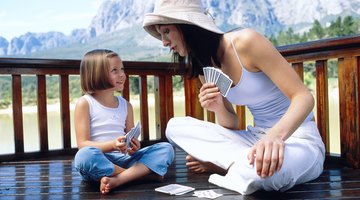How to Make Non-Slip Paint
Non-slip surfaces are an essential safety feature for patios, decks and outdoor walkways. While premade non-slip paint is available, the purchased version is thicker, grittier and less user-friendly than paint you mix yourself.

You simply mix grit additive -- commonly found at home improvement stores -- into the paint color of your choice. Use a fine grit for areas where you walk barefoot, such as an outdoor patio or a bathroom, and coarse grits for places where you would be unlikely to walk barefoot, such as an outdoor concrete walkway.
Things You Will Need
- Latex-based floor paint
- Grit additive
- Large wooden dowel
- Large plastic bucket
Tip
You can also mix grit additives into floor epoxies and wood stains.
Warning
Do not use sand as a substitute for grit additive. Sand is heavy and tends to settle into the bottom of the paint; grit additives are made from lighter materials such as rubber pieces or walnut shells and tend to stay suspended longer in the paint.
-
Pour the paint from your paint can into a large plastic bucket. This prevents overflow as you mix in the grit additive.
-
Measure 1 pint of grit for every gallon of paint you use. You can increase the amount to 1 quart of grit per gallon, depending on how you want the surface to feel underfoot. More grit results in a rougher surface.
-
Mix in the grit additive. Stir using a wooden dowel until the grit is thoroughly mixed.
-
Paint the surface immediately, or pour the grit and paint mixture into airtight containers if you plan to paint later. Mix the grit and paint mixture occasionally as you paint to prevent the grit from settling into the bottom of the bucket.
The Drip Cap
- Non-slip surfaces are an essential safety feature for patios, decks and outdoor walkways.
- Mix the grit and paint mixture occasionally as you paint to prevent the grit from settling into the bottom of the bucket.
References
Writer Bio
Based in Chicago, Annie Wang has been writing since 2008. Her work has appeared in World Architecture News and other online publications. She holds Bachelor of Arts degrees in English and art history from the University of California, Davis.
Photo Credits
- Goodshoot/Goodshoot/Getty Images
- Goodshoot/Goodshoot/Getty Images
More Articles



